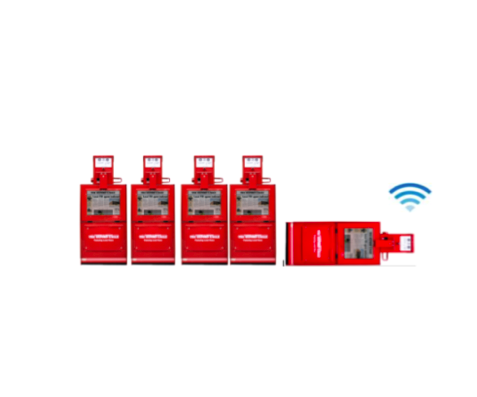To fail to criticize everyday life means accepting the prolongation of the present thoroughly rotten forms of culture and politics…
-Guy Debord, “Perspectives for Conscious Alterations in Everyday Life”
What is Trauma Art?
- Works of art that disturb
- They “attach an excess of meaning to the objects designed to convey meaning” (Siebers, 14)
- Shock viewers with wounded bodies and traumatized flesh
- Damien Hirst’s A Thousand Years (1990)
- A “life cycle in a box”
- Hirst: “You can frighten people with death or an idea of their own mortality, or it can actually give them vigor.”
- Blurring the artificial and the real
- Contemporary forms of entertainment rely on “the inability of the spectator to know what is real – which means that everything is real” (Siebers, 14)
- Reality TV
- Violence:
- “no perceivable distinction between the thrill and terror felt before so-called artificial forms of violence, e.g., slasher films, and what is felt before the media reportage of biological disasters, terrorist bombings, ethnic conflicts, and famines” (14)
- Trauma art disrupts this:
- “A particular and ordinary object becomes the subject of intense focus, with the result that it changes into another object, but an object of a special kind, one that maintains a peculiar materiality while achieving a universal and communicable meaning beyond its materiality.” (15)
What Does Trauma Art Have to Do With Coverage and Reporting?
- Shock readers/viewers into paying closer attention?
- Images of war, torture, assaulted victims
- Engage publics through discomfort?
- Is this effective or counterproductive?
- Make the unfamiliar familiar?
- Mortality and death, taken-for-granted practices and behaviors
Case Study: People for the Ethical Treatment of Animals (PETA)
- “Meat is Murder” campaign (NYC, 2010)
- “All meat comes from somebody”
- Jeff Mackey: “The thought of chewing and swallowing the skin and muscle of a murder victim surely ruined some viewers’ appetites for flesh food. It’s the appropriate response to witnessing a gruesome display of the corpses of those who have been tormented and killed – you know, like in the butcher department of your supermarket.”
- PETA Asia’s recent “Behind the Leather” campaign
- Cruelty involved in making exotic animal skin products and leather goods
- Kept in inhumane conditions, brutally paralyzed, skinned alive
- Kalel vs. Down (and Foie Gras)
- Cruel practices involved with obtaining down feathers and making foie gras (liver of fattened goose/duck)
Other Examples
SeaWorld of Hurt: Where Happiness Tanks
Discussion
Is this sort of traumatic shock and disruption effective? Or, is it distracting? Are you going to follow the advertised campaign links and hashtags to read more about the particular circumstances being covered on non-human animal abuse and mistreatment? Or, are you going to head over to Google for some more risque images of your favorite celebrities posing for PETA?
How do we balance these types of approaches with the push-back groups might receive for the controversial or “offensive” nature of their imagery; e.g., PETA’s sexualized depictions of men and women and their “whatever it takes to turn heads” strategy?
How might we think about the use of traumatic imagery and its relation to “the spectacle” of the various industries amid consumer culture (meat, fur, cosmetic, research, etc.)? Consider Pierre Canjuers and Guy Debord’s insistence that “[r]evolutionary artists are those who call for intervention, and who have themselves intervened in the spectacle in order to disrupt and destroy it.” (308)
Source Material
Canjuers, Pierre and Guy Debord. “Preliminaries Toward Defining a Unitary Revolutionary Program.” In Situationist International Anthology, edited and translated by Ken Knabb, 305-310. California: Bureau of Public Secrets, 1981.
Debord, Guy. “Perspectives for Conscious Alterations in Everyday Life.” In Situationist International Anthology, edited and translated by Ken Knabb, 68-75. California: Bureau of Public Secrets, 1981.
Siebers, Tobin. “The Return to Ritual: Violence and Art in the Media Age.” Journal for Cultural and Religious Theory 5 (2003): 9-33.












No comments:
Post a Comment